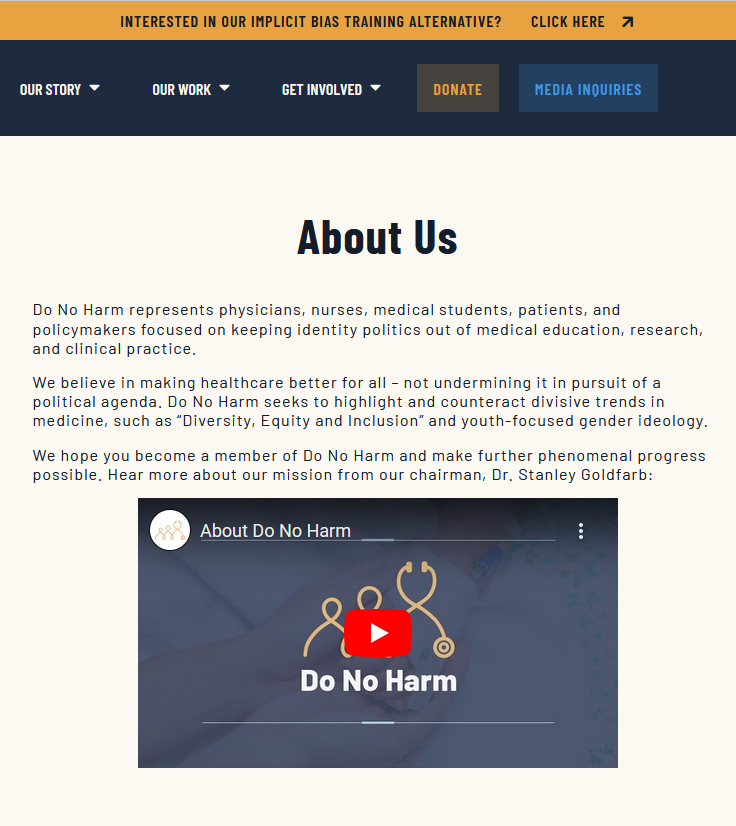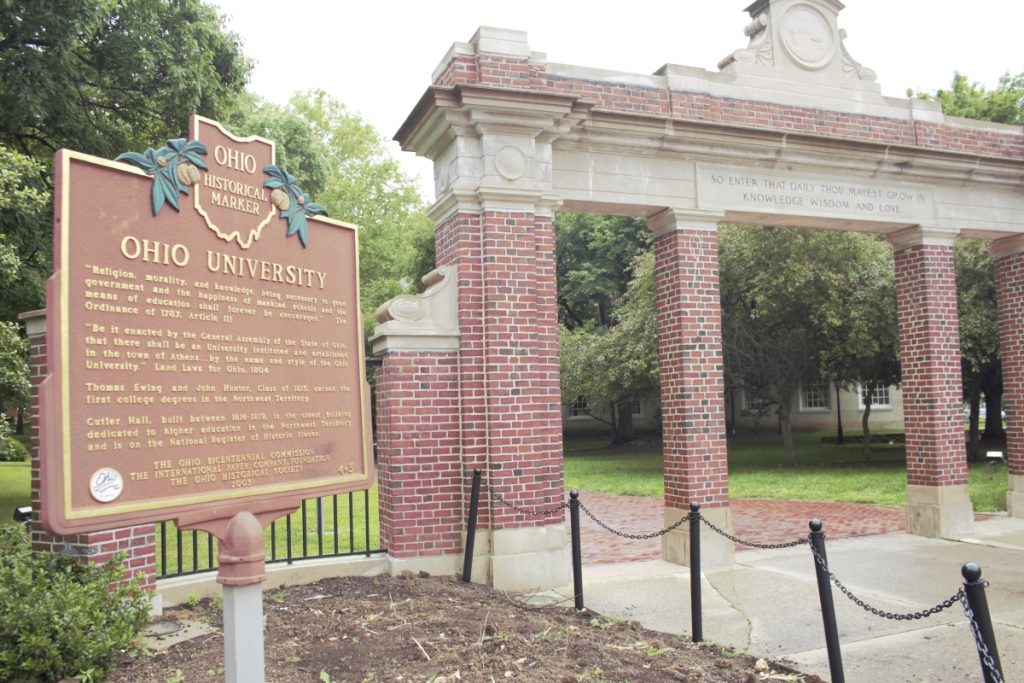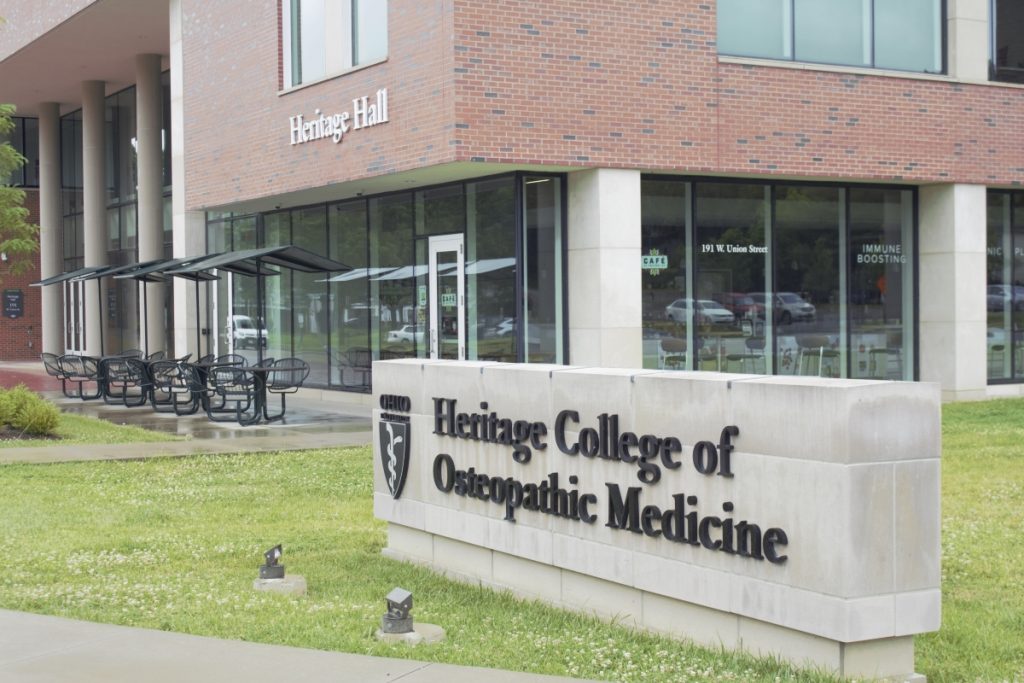News
Ohio University replaces a diversity program as complaints grow about such initiatives in higher education
By: Theo Peck-Suzuki (Report for America) | Shane Scalfaro
Posted on:
ATHENS, Ohio (WOUB/Report for America) — Mark Perry was pleased.
It had only been five months since he’d filed a complaint against Ohio University’s Heritage College of Osteopathic Medicine for violating the racial discrimination section of the Civil Rights Act. The university had reacted with lightning speed — scrubbing all mention of race from the program in question and removing the word “diversity” from the title.
“I applaud them for doing this and for doing it quickly,” Perry said. “Sometimes, I think universities can be stubborn.”
Perry is a senior fellow at Do No Harm, which seeks to “counteract divisive trends in medicine, such as ‘Diversity, Equity and Inclusion’ and youth-focused gender ideology.” The program he took issue with, the Cleveland Clinic Physician Diversity Scholars Program, paired medical students from underrepresented minorities with doctors in the Cleveland Clinic health system who could serve as mentors. Because it was only open to minority students, Perry contended the program was a flagrant violation of Title VI, which prohibits discrimination on the basis of race.

Perry, who has filed thousands of similar complaints against universities across the U.S., said this was one of the more straightforward violations he’s seen.
“Sometimes it’s a little more fuzzy or squishy, but this was a very clear case of this blatant discrimination,” Perry said.
Title VI states that “No person in the United States shall, on the ground of race, color, or national origin, be excluded from participation in, be denied the benefits of, or be subjected to discrimination under any program or activity receiving Federal financial assistance.” Because Ohio University is publicly funded, it must abide by that rule.
In Perry’s view, Ohio University’s program clearly fell afoul of Title VI — and would have even before the Supreme Court declared affirmative action in university admissions unconstitutional in 2023.
“Even without that, it’s always been illegal for a university to discriminate on the basis of race … for scholarships, fellowships, awards and programs,” Perry said. “That (the Supreme Court case) doesn’t really impact what I’ve been doing, except for the fact that it’s been, you know, brought a lot more attention to the fact that universities are not really supposed to discriminate on the basis of race throughout their entire educational system.”
But Perry’s position raises a question: If programs like this really are illegal, how did they become so prevalent, not only at Ohio University but throughout the country? The law hasn’t changed since the Civil Rights Act was first passed, and even as the Supreme Court overturned affirmative action in admissions decisions, it left other diversity initiatives untouched.
So what changed?
The Office for Civil Rights
Brigid Harrington is an attorney who specializes in civil rights and higher education. According to her, the use of Title VI to challenge diversity initiatives like the Physician Diversity Scholars Program is a relatively recent phenomenon.
“When … Title VI was enacted, and when we think of racism in the country, we think of the many policies and programs that were written and that disfavored nonwhite people,” Harrington said.
At the time of its passage, the Civil Rights Act was seen as a way to protect nonwhite groups from discriminatory laws and practices enacted by the country’s white majority. Conversely, Harrington said, present-day complaints like Perry’s serve to advance the interests of that same white majority.
The law as written hasn’t changed between then and now. What has changed, Harrington said, is the Office for Civil Rights in the U.S. Department of Education. This is the office that handles civil rights complaints against publicly funded universities.
“You saw a huge uptick of these (complaints about diversity programs) during the Trump administration, and that is when you saw OCR enforcing … Title VI and Title IX scholarship requirements to favor the majority groups,” Harrington said.
Although the Biden administration is now in charge of the Department of Education, there hasn’t been a pronounced change in policy regarding these complaints. Harrington said that’s not entirely surprising.
“There is value in a continuing interpretation and not being very super political,” Harrington said. “And I think the trend toward not favoring a certain gender or not favoring a certain race is one that is not completely divided along party lines.”

The reason OCR has been able to essentially change the implementation of the law on its own has to do with the source of its power.
“Federal funding is their hammer, right? So in order for schools to receive federal funding, they have to comply with Title VI and Title IX as OCR interprets them,” Harrington explained.
That has profound implications for universities that might otherwise be inclined to push back.
“A school would have to be willing to lose their federal funding first in order to challenge an OCR decision. … You know, you’re talking about federal student loans. You’re talking about federal grants. You’re talking about all kinds of federal funding that colleges and universities are really dependent on, in addition to the legal cost,” Harrington said.
By her estimate, such a case could drag on for a decade — and, in the end, the text of the law does seem to support Perry’s position.
“Title VI itself doesn’t say, ‘You can’t discriminate on the basis of race unless you’re discriminating against white people.’ It protects every race equally from discrimination,” Harrington said.
Diversity and health care
At the heart of the dispute over programs like the one Ohio University replaced is a question of how to address health disparities in the U.S. Such disparities are well-documented: For example, the Centers for Disease Control and Prevention has found Black women face a much higher maternal mortality rate than white women and LGBTQ+ individuals (among others) are at significantly greater risk of suicide.
Sean Diment, a rising third-year medical student at the Heritage College of Osteopathic Medicine, said these disparities make diversity a medical imperative.
“We physicians are tasked with objective truths,” Diment said. “The objective fact is, we have people from various backgrounds, so we should be aware and able to take care of people from various backgrounds. And it helps when you have someone who has a working knowledge (of those backgrounds) from lived experience.”
By contrast, Perry suggested focusing on diversity misses the point.
“Do you have to compromise medical standards and medical abilities to meet that goal (of greater diversity)? And then … if you have unqualified minority medical students treating patients when they graduate, then maybe they’re not doing the best service for the community,” Perry said.
Perry was not aware of any studies showing that doctors from minority backgrounds are actually performing worse than their peers, or that they are leaving school without the skills they need.
Diment, whose mother is from the Philippines, said he has seen the benefits of diversity in medicine firsthand.
“There was a unique struggle that I was experiencing, and my primary care person happened to be a Filipino-American as well,” Diment said. “(The struggle) was rooted in a family dynamic, and she was really able to understand and empathize with that.”
For those who can’t relate, Diment offered another example.
“My family has served in the military for generations,” Diment said. “The ability for a veteran to connect with another veteran within the health care context offers a lot … because that person served. So there’s an immediate shared sense of lived experience that creates a sense of rapport that is hard to replicate from someone who has not served in the military.”

Schools can’t set aside programs specifically for minorities, but they can still recruit from underrepresented groups. In addition, they can create programs that are more likely to attract certain students. Harrington pointed to scholarships in women’s health as an example.
“Those (applicants) tend disproportionately to be females themselves, and so the people who get that scholarship tend disproportionately to be women,” Harrington said.
Despite their differences, both Perry and Diment independently suggested efforts to diversify medicine should perhaps start before students even go to college.
“If there’s a shortage of Black medical students applying and being accepted into U.S. medical colleges, then maybe the problem is what happens before they apply to medical school,” Perry said. “And then you could go back and see what the education is that they’re receiving in grade school and high school and if that’s substandard.”
Diment said he’s familiar with schools that send physicians into underrepresented communities to act as role models.
“For so many folks … medical school might not be something you’re ever taught to consider,” Diment said. “But we should (encourage them). Because I still believe that in this country, no matter where you come from, you are capable … regardless of income, regardless of background.”
The benefits might extend beyond the communities in question. Diment said Ohio University’s diversity offerings helped persuade him to move to southeast Ohio — and broadened his own horizons in the process.
“When I came here, I wasn’t really sure if I wanted to consider doing rural medicine,” Diment said. “But you know, I’ve truly fallen in love with the Athens community.”
Editor’s note: WOUB updated the story to remove the words “the conservative advocacy organization” from the description of Do No Harm, believing it better to let the organization’s own description of its activities speak for itself.

